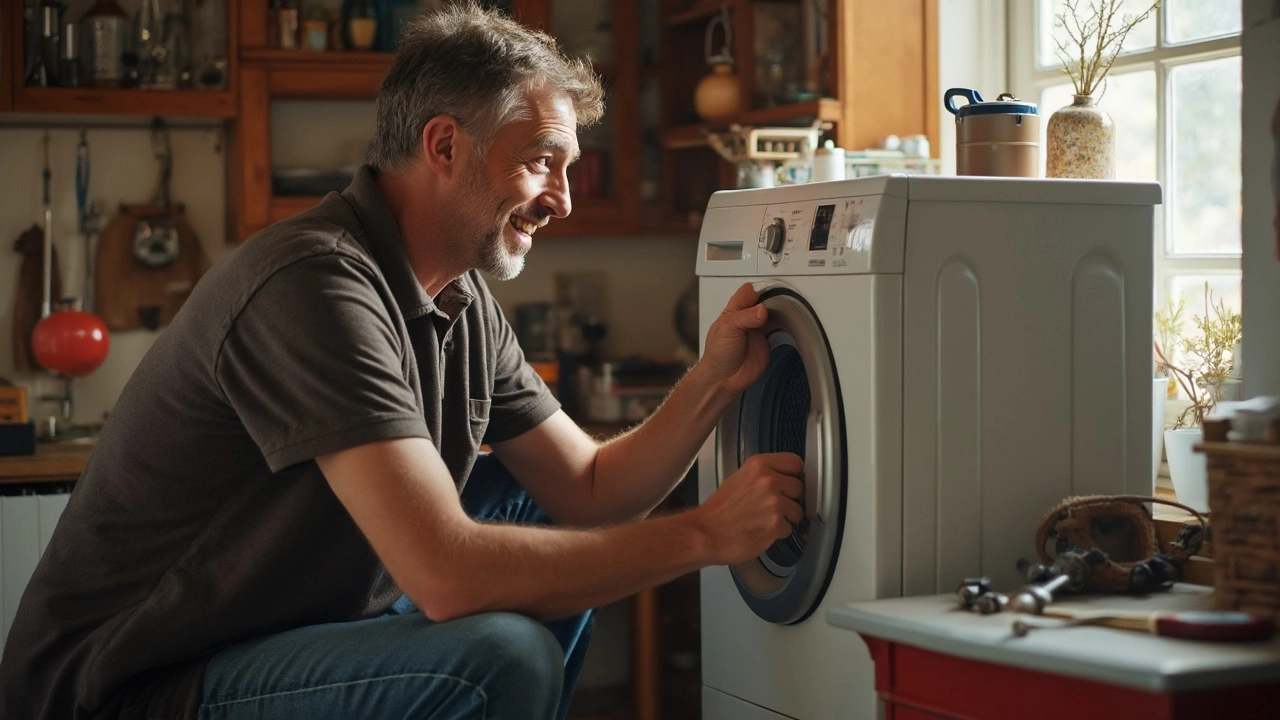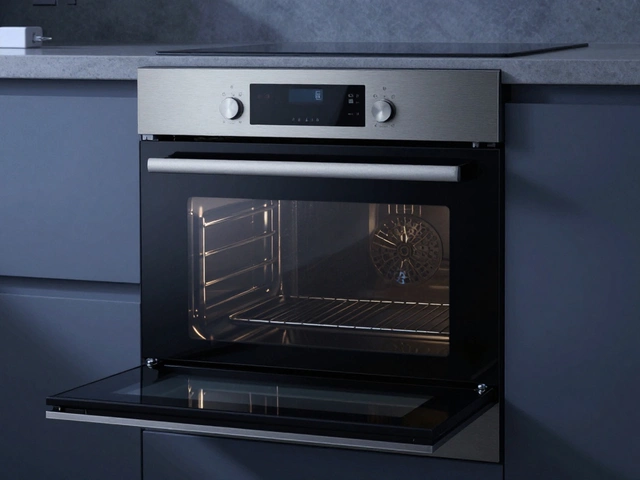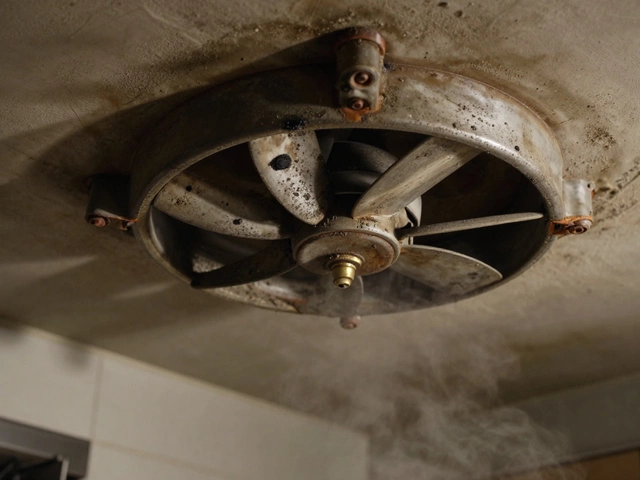Ever feel like your washing machine has a mind of its own? Maybe yesterday it was washing like a champ, but today it's refusing to spin. Before calling in a pricey professional, consider rolling up your sleeves and taking a shot at fixing it yourself. It's not as outlandish as it may sound! With a bit of curiosity and some basic tools, you might just save a ton of cash.
First things first, let’s talk about common issues. Leaky hoses, clogged pumps, or a drum that won't spin are some big culprits. Recognizing these problems early can save you from a massive headache—trust me, I've been there. And while handling a washing machine might sound complicated, some fixes are surprisingly straightforward.
Now, I won't lie to you—having a few tools and understanding some safety basics is a must. We're talking about screwdrivers, pliers, and a multimeter to check out electrical issues if you’re feeling adventurous. And don't skimp on safety. Unplug everything before you even think about cracking it open.
- Identifying Common Issues
- Essential Tools and Safety Tips
- Step-by-Step DIY Fixes
- When to Call a Professional
Identifying Common Issues
Alright, so your washing machine is acting up, and you're left scratching your head. Before going all out and dismantling the thing, it helps to know what you're dealing with. Here are some of the most common problems that might be throwing your machine off balance.
Leaking Water: If you walk into your laundry room and it's flooded, it might just be a leaky hose. Check the hoses at the back—sometimes a simple tightening can do wonders. Another sneaky culprit is the door seal. If you spot moisture there, it might be worn out.
Not Draining: Ever opened the lid to find clothes swimming in a pool of soapy water? That's usually a drainage issue. Blocked drains are often due to tiny items clogging the pump. Clear out any debris, and you might solve the problem in a jiffy.
- Inspect the Drain Pump: Make sure nothing is lodged or stuck.
- Check the Drain Hose: Ensure it's not kinked or blocked.
Spin Cycle Woes: When the drum refuses to spin, the main suspect could be a broken drive belt or a malfunctioning motor. If it's a belt problem, the fix might be as simple as a swap-out.
Noisy Operation: If your machine sounds like it's auditioning for a heavy metal band, think of loose objects like coins or buttons in the drum. Also, check if the machine is wobbling due to an uneven floor.
Believe it or not, knowing these issues can save you tons of time and hassle. Being familiar with these glitches means you’ll know if you can handle it on your own or if it’s time to bring in the pros.
Essential Tools and Safety Tips
Tackling washing machine repair on your own isn't just about knowing what’s wrong—it's about having the right tools and staying safe while doing it. Trust me, it’s not worth risking an electric shock because you skipped a safety measure. Here’s a rundown of what you’ll need and how to keep it all safe and sound.
Firstly, let's talk tools. You don’t need a crazy array of gadgets, just a few basics you might already have:
- Screwdrivers: Both flathead and Phillips are must-haves for removing panels and covers.
- Pliers: Reach for a pair of adjustable pliers to grip, pull, and twist those stubborn parts.
- Multimeter: Super handy for troubleshooting electrical kinks, such as faulty connections or dead wires.
- Wrench: Adjustable wrenches make loosening and tightening bolts a cinch.
Before diving into any washing machine repair, safety is king. Here are some key tips to keep you out of harm’s way:
- Unplug the Machine: Always disconnect from power before opening up any appliance. This is the number one step to avoid accidents.
- Wear Gloves: It’s not just dirt you’re dealing with but sharp edges inside the machine, so protect those hands!
- Work in a Well-lit Area: Good lighting helps you see what you’re doing and avoids missteps.
"Safety isn't expensive, it's priceless," says Mike Holmes, a renowned home renovation expert.
Lastly, if something seems too complex, don’t sweat it. Sometimes knowing when to call in a pro is part of the DIY wisdom. With these tools and tips in your back pocket, though, you'll be fixing minor issues like a champ!
| Tool | Purpose |
|---|---|
| Screwdriver | Remove panels and covers |
| Pliers | Grip and twist parts |
| Multimeter | Check electrical connections |
| Wrench | Loosen or tighten bolts |

Step-by-Step DIY Fixes
Getting your hands dirty fixing a washing machine can be strangely satisfying, especially when all goes well. If you've spotted a leak or that annoying refusal to spin, here's the lowdown on solving these issues.
Let's tackle the drainage problem first. If your washer isn't draining, the pump or the drain hose might be clogged. Follow these steps:
- Unplug your washing machine: Safety first! Always disconnect from the power source to avoid any nasty shocks.
- Locate the drain pump: Usually, it's at the bottom of the machine. Use a screwdriver to open the lower panel if needed.
- Inspect the pump filter: Check for lint or small objects like coins. These buggers can clog things up pretty quickly.
- Clean the hose: Detach the drain hose and run water through it to clear any debris. A little flush can do wonders.
- Reassemble and test: Put everything back together and run a short cycle without clothes. Check if the water drains properly.
How about fixing a washing machine leak? It’s usually your hoses acting up:
- Turn off the water supply: This prevents any accidental flooding while you check the hoses.
- Inspect connections: Look at the hoses connected to the back of the machine. Are they tight? If not, use pliers to snug them up.
- Look for cracks or bulges: Damaged hoses need replacing. Always pick the right fit to avoid surprises later.
Washing machine won't spin? A common headache! Often it's the lid switch or the drive belt:
- Check the lid switch: On top loaders, if the lid switch isn't working, the cycle might stop. You might have to replace it if it's busted.
- Examine the drive belt: For front loaders, if the belt is worn out, it can't spin the drum. It’s like a car - no belt, no drive.
- Replace if necessary: Don’t panic. Replacing the belt is usually straightforward. Just make sure it's snug and aligned.
When all else fails, hit up some online forums or repair guides. You'd be surprised how many people are eager to help out fellow DIYers. And remember, if things start to feel overwhelming, calling a pro might be the best next step.
| Common Issues | DIY Success Rate |
|---|---|
| Clogged Drain Pump | 90% |
| Leaking Hoses | 85% |
| Lid Switch Fails | 70% |
When to Call a Professional
So you're waist-deep in loose screws and manuals, and that washing machine still isn't singing your tune. Sometimes, it's okay to wave the white flag. In some cases, calling in a professional isn't just the easy way out—it's the smart one.
One major red flag is anything to do with electrical issues. If your washing machine gives off sparks, smells burnt, or pops your home’s breaker, it's time to step back and call an expert. Electrical repairs can be dangerous, and it's better to leave that to the people with the knowledge and tools for safe handling.
Then there’s anything involving the machine's motor or control board. These components are like the brain and muscles of your washing machine. They're complicated, and poking around without the right expertise can sometimes make things worse or even void your warranty.
Another situation? When repairs require specific diagnostic tools or parts that aren’t easy to come by. If a part needs ordering and complex installation, a pro has the insider know-how and connections to get it quickly and efficiently.
- Complex electrical issues: Sparks, burning smells, or persistent electrical failures.
- Motor or control board problems: Beyond basic DIY fixes.
- Proprietary tools or skills: Special diagnostic requirements or parts.
If you're unsure whether to proceed on your own or get help, don't hesitate to ask for professional advice. Sometimes, a quick phone call can confirm whether you're in over your head. Professionals in washing machine repair have the expertise to not only fix the issue but also ensure it doesn’t come back to haunt your laundry days.





